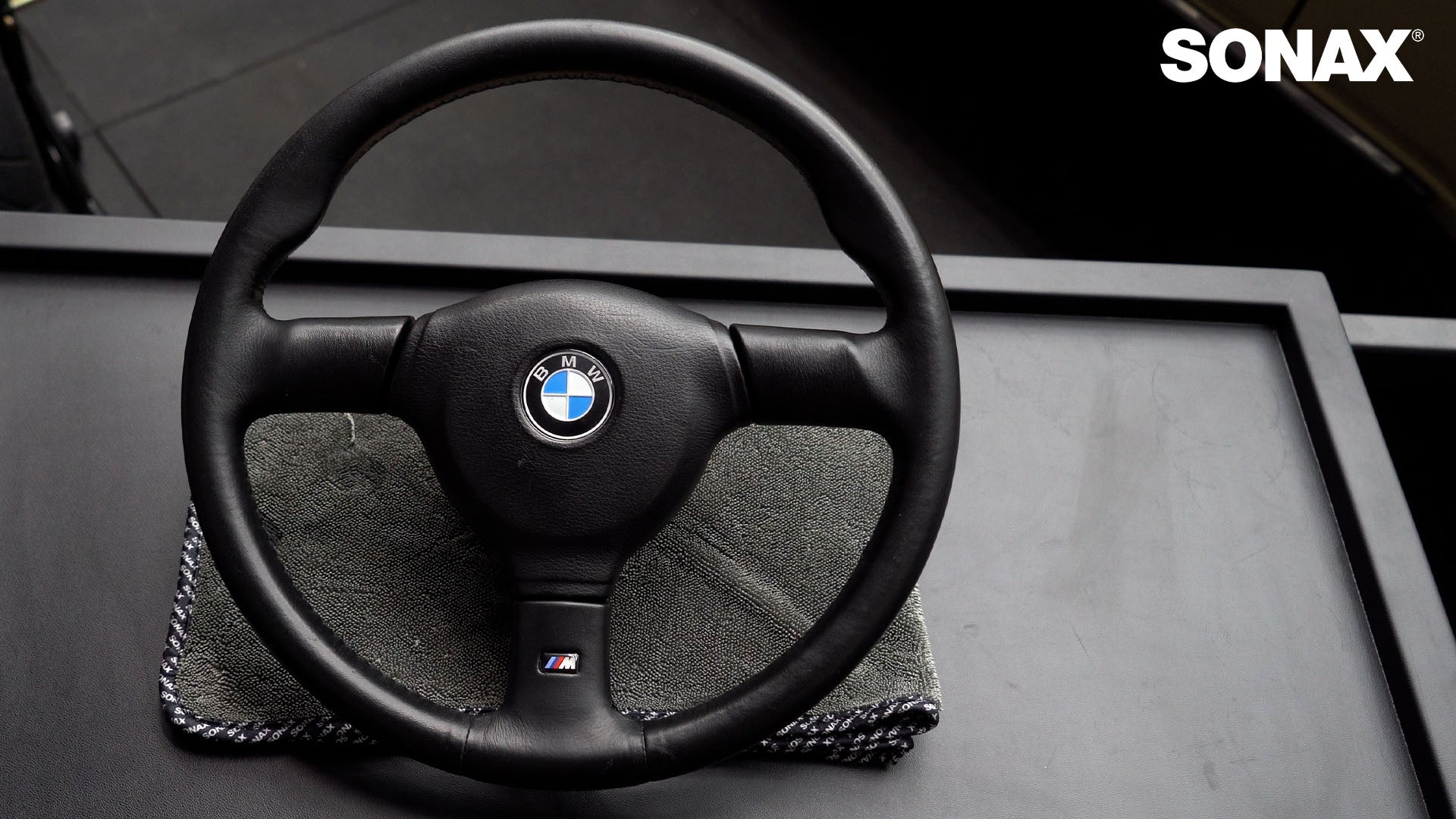A Step-By-Step Guide to the Perfect Car Wash Routine
Our step-by-step guide to the perfect car wash routine will ensure that your car shines like new every time. With easy-to-follow instructions and tips from industry experts, you'll learn the secrets to achieving that showroom-worthy finish. Say goodbye to swirl marks and water spots as our guide reveals the techniques professionals use to wash cars and protect their paintwork. We'll cover everything from washing and drying to waxing and maintaining that showroom shine. So why settle for a mediocre car wash when you can achieve professional results right at home? Get ready to transform your car washing routine with our ultimate guide.
Importance of maintaining a clean car
Keeping your car clean goes beyond just aesthetics. Regular car washing is essential to protect your vehicle's paintwork and prevent damage caused by dirt, grime, and harmful contaminants. Dust, bird droppings, and road salt can all take a toll on your car's exterior, leading to corrosion and a decrease in its resale value. Additionally, a dirty car can hinder visibility and compromise your safety on the road. By following a proper car wash routine, you can maintain the appearance and integrity of your vehicle for years to come.
Gathering the necessary supplies for a car wash:
Before you dive into the car wash process, it's crucial to gather all the necessary supplies. Here's a list of items you'll need to achieve the perfect car wash:
1. Car wash soap: Choose a pH-neutral soap specifically formulated for automotive use. Avoid using dish soap or household cleaners, as they can strip off the protective wax on your car's paintwork.
2. Microfiber wash mitt/sponge: Opt for a soft, microfiber wash mitt or quality sponge to minimize the risk of scratching your car's surface.
3. Buckets: Use two buckets – one for soapy water and another for rinsing the wash mitt/sponge. This prevents dirt and debris from contaminating the soapy water, reducing the chances of scratching your car's paint.
4. Grit guard: Place a grit guard at the bottom of the rinse bucket to trap dirt particles and prevent them from being reintroduced to the wash mitt.
5. Wheel cleaner: Invest in a quality wheel cleaner that is safe for your specific type of wheels.
6. Wheel & Tyre brush: To effectively clean your tyres, use a dedicated tire brush designed to remove stubborn dirt and grime.
7. Drying towels: Use a soft microfiber drying towel to dry your car's exterior thoroughly. Avoid using regular towels or chamois, as they can leave lint or scratches.
8. Detailing products: Consider investing in additional detailing products such as a clay bar, polish, and wax for a more thorough cleaning and protection of your car's paintwork.
By having all these supplies ready, you'll be fully equipped to tackle each step of the car wash process with ease.
Preparing the car for washing
Before you start washing your car, it's important to prepare it properly to avoid any potential damage. Follow these steps to ensure a safe and effective car wash:
1. Find a suitable location: Choose a shaded area or wash your car during the cooler parts of the day to prevent the soap from drying quickly, which can lead to streaks.
2. Remove personal items: Clear out any personal belongings from your car, including trash, floor mats, and removable accessories. This will make the cleaning process easier and more efficient.
3. Rinse the car: Use a hose or pressure washer to rinse off loose dirt and debris from the car's exterior. This initial rinse helps remove larger particles that could potentially scratch the paint during the washing process.
4. Close windows and sunroof: Ensure that the windows are fully closed and the sunroof is shut to prevent water from entering the interior of the car.
Once you've completed these preparation steps, you're ready to move on to the next stage of the car wash process.
Washing the exterior of the car
Now that your car is prepped and ready, it's time to start washing the exterior. Follow these steps for a thorough and safe clean:
1. Start from the top: Begin washing your car from the top down to prevent dirt and contaminants from being dragged across the surface. This method helps minimize the risk of scratching your car's paintwork.
2. Use the two-bucket method: Dip your wash mitt into the soapy water bucket and apply it to a small section of the car's surface using gentle, straight motions. Each pass should overlap the last. Rinse the mitt in the clean water bucket before reloading it with soapy water. Repeat this process for each section of the car until the entire exterior is clean.
3. Pay attention to the details: Don't forget to clean hard-to-reach areas such as the door jambs, fuel filler area, and around the windshield wipers. Use a soft brush or detailing tools to reach these areas effectively.
4. Rinse thoroughly: After you've washed the entire car, use a hose or pressure washer to rinse off all the soap residue. Make sure to remove any lingering soap to prevent streaks and water spots.
By following these steps, you'll achieve a thorough and scratch-free wash for your car's exterior.
Cleaning the wheels and tyres
While the car's exterior is the main focus of a car wash, it's equally important to pay attention to your wheels and tires. Here's how you can effectively clean them:
1. Apply wheel cleaner: Spray the wheel cleaner onto each wheel, ensuring full coverage. Allow the cleaner to sit for a few minutes to break down brake dust and grime.
2. Scrub the wheels: Use a dedicated wheel brush or sponge to scrub the wheels, paying close attention to the spokes, inner rims, and brake calipers. This helps remove stubborn dirt and brake dust.
3. Clean the tires: Scrub the tires using a tyre brush. This will remove any embedded dirt and grime, leaving your tires looking clean and rejuvenated.
4. Rinse thoroughly: After scrubbing the wheels and tyres, rinse them with water to remove all traces of the cleaner and dirt.
Properly cleaning your wheels and tyres not only enhances the overall appearance of your car but also helps prevent corrosion and damage caused by dirt and brake dust buildup.
Drying the car properly
After rinsing off the soap and cleaning the wheels, it's time to dry your car properly. Follow these steps to avoid water spots and streaks:
1. Start with the windows: Use a clean microfiber towel to dry the windows first, starting from the top and working your way down. This helps prevent streaks caused by water dripping down the car's exterior.
2. Dry the body panels: Use a soft, absorbent drying towel to remove excess water from the car's body panels. Start from the top and work your way down, ensuring that you dry every surface thoroughly.
3. Pay attention to crevices: Don't forget to dry hard-to-reach areas such as side mirrors, door handles, and emblems.
4. Dry the wheels: Use a separate microfiber towel to dry the wheels and tires. Make sure to remove all water from the wheel wells and spokes to prevent water spots.
By following these drying techniques, you'll achieve a spotless and streak-free finish for your car's exterior.
Interior Cleaning and Detailing
Now that the exterior of your car is clean and dry, it's time to shift your focus to the interior. Follow these steps to give your car's interior a thorough cleaning:
1. Remove trash and debris: Start by clearing out any trash, food wrappers, or loose items from the interior of your car. Use a vacuum cleaner or a handheld vacuum to remove dirt and debris from the floor mats, seats, and crevices.
2. Vacuum the upholstery: Use a vacuum cleaner with a brush attachment to vacuum the seats, floor mats, and carpeted areas. Pay close attention to the seams and crevices where dirt and debris tend to accumulate.
3. Clean the surfaces: Use an interior cleaner or a mild all-purpose cleaner to wipe down the dashboard, door panels, center console, and other hard surfaces. Ensure that you use a microfiber cloth or a soft brush to avoid scratching the surfaces.
4. Condition the upholstery: If your car's seats or interior surfaces are made of leather or vinyl, consider using a conditioner to keep them supple and prevent cracking.
5. Clean the windows: Use a glass cleaner and a microfiber cloth to clean the interior windows, removing any fingerprints or smudges.
By following these interior cleaning steps, you'll have a fresh and comfortable interior that complements your sparkling clean exterior.
Maintaining your car's shine and protection
Once your car is clean inside and out, it's important to maintain its shine and protection. Here are some tips to keep your car looking its best:
1. Regularly wash your car: Establish a regular car wash routine to prevent dirt and grime buildup. Depending on your location and driving conditions, washing your car every two weeks is generally recommended.
2. Apply a quality wax, sealant or ceramic coating: After washing your car, consider applying a wax or sealant to protect the paintwork and add an extra layer of shine. If you want the ultimate level of protecting - a Ceramic Coating is a great solution.
3. Avoid parking under trees: Tree sap, bird droppings, and falling leaves can damage your car's paintwork. Whenever possible, park your car in a covered or shaded area to protect it from these environmental hazards.
By implementing these maintenance practices, you'll be able to preserve the shine and protect your car's exterior for the long haul.
Frequency of car washing
The frequency of car washing depends on various factors such as your location, driving conditions, and personal preferences. While some car owners may opt for weekly car washes, others may find that a monthly wash is sufficient. Consider the following guidelines when determining how often to wash your car:
1. Weather conditions: If you live in an area with harsh weather conditions, such as frequent rain or snow, you may need to wash your car more frequently to remove dirt, salt, and other contaminants.
2. Driving habits: If you frequently drive on dusty roads, gravel, or construction areas, your car may accumulate dirt and debris more quickly, requiring more frequent washes.
3. Appearance preferences: If you take pride in having a clean and shiny car, you may choose to wash it more often to maintain its pristine appearance.
Ultimately, the frequency of car washing is a personal choice, but it's important to strike a balance between cleanliness and potential damage caused by excessive washing.
Conclusion
You've reached the end of our step-by-step guide to the perfect car wash routine. By following these instructions and tips, you'll be able to achieve professional-level results right at home. Remember, regular car washing not only keeps your vehicle looking its best but also protects its paintwork and maintains its resale value. So why settle for a lackluster car wash when you can take your car cleaning skills to the next level? Get ready to transform your car washing routine and enjoy a showroom-worthy shine every time you hit the road.




